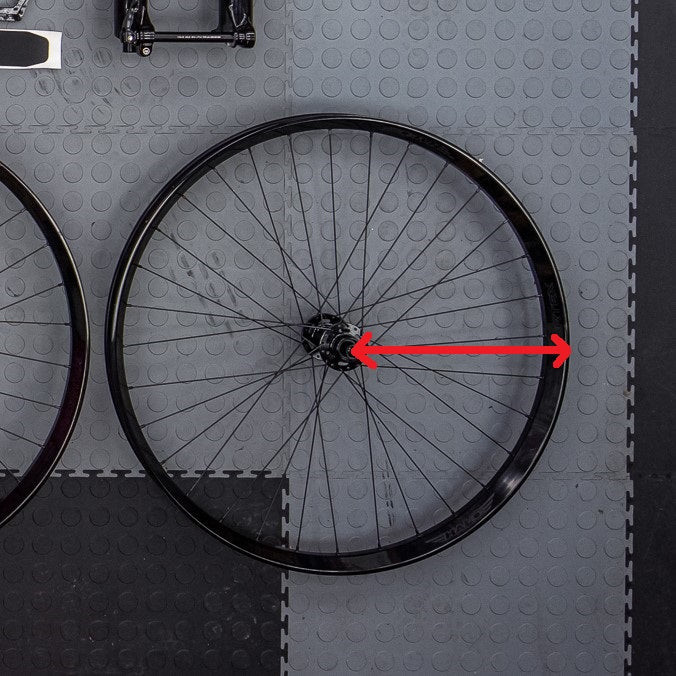Navigating the world of bike wheels can initially feel overwhelming. With terms like 26 inch, 650b, 700c, and 29er being thrown around, understanding what they signify is crucial for any cyclist. This guide breaks down the mystery of bike wheel sizing, making it easy to determine your wheel size and understand the different standards used for mountain bikes and road bikes.
Understanding Bike Wheel Sizes: MTB vs. Road
Bike wheels are generally categorized into mountain bike (MTB) wheels and road bike wheels, and they often use different measurement systems.
Mountain Bike Wheel Sizes
For mountain bikes, wheel sizes are typically expressed in inches. Historically, 26-inch wheels were the standard for MTBs for a long time. However, in recent years, 27.5-inch (also known as 650b) and 29-inch wheels have gained significant popularity and are now common standards.
 Mountain biker checking tubeless sealant on a 27.5 inch mountain bike wheel.
Mountain biker checking tubeless sealant on a 27.5 inch mountain bike wheel.
Road Bike Wheel Sizes
Road bike wheels, on the other hand, are more frequently referred to using the International Organization for Standardization (ISO) system, which uses millimeters. The most prevalent size for road bikes is 700c. You might also encounter 650b or 650c sizes, particularly on smaller frames or older bikes.
 Road cyclist inflating a 700c road bike tire.
Road cyclist inflating a 700c road bike tire.
How to Find Your Bike Wheel Size
If you need to determine your bike wheel size, there are a few key places to check.
Checking the Rim and Tire
The easiest way to find your wheel size is to look directly at the rim of your wheel. Some manufacturers print the wheel size on stickers located on the rim itself. If not on the rim, your next best place to check is the tire sidewall. Tire manufacturers almost always print the size information directly on the tire. If the bike is new, you might also find size information on frame stickers or in the bike’s specifications.
Measuring Your Bike Wheel (ISO method)
If you can’t find the size printed anywhere, you can measure it yourself using the ISO system method. This involves measuring from the center of your wheel hub to the outside edge of your rim. Once you have this measurement, you can use a conversion chart to determine the standard wheel size.
 Diagram illustrating how to measure a bike wheel diameter using the ISO system.
Diagram illustrating how to measure a bike wheel diameter using the ISO system.
Bike Wheel Size Chart and Key Takeaways
To help you convert ISO measurements and understand the different sizing conventions, refer to the chart below:
| Wheel Size | ||
|---|---|---|
| ISO length (mm) | Inches (MTB size) | Road Bike size |
| 305 | 16 | |
| 406 | 20 | |
| 507 | 24 | |
| 559 | 26 | 650c |
| 584 | 27.5 | 650b |
| 622 | 29 | 700c |
Important Points to Remember about Wheel Sizes
- The terms 27.5 inch and 650b are often used interchangeably when discussing mountain bike wheel sizes.
- While 29-inch wheels and 700c wheels have the same ISO diameter (622mm), they are generally not referred to interchangeably by mountain bikers and road cyclists. Mountain bikers will say 29 inch, and road cyclists will say 700c.
- 24-inch wheels are commonly found on children’s bikes and dirt jump bikes.
- BMX bikes typically utilize 20-inch wheels.
- Bike wheel size is often followed by another number indicating the tire width. For example, ‘700 x 35c’ or ‘27.5 x 2.10’, where the latter numbers define the tire width in millimeters or inches respectively.
By understanding these basics, you can confidently identify and discuss bike wheel sizes, ensuring you have the right wheels for your cycling needs.
